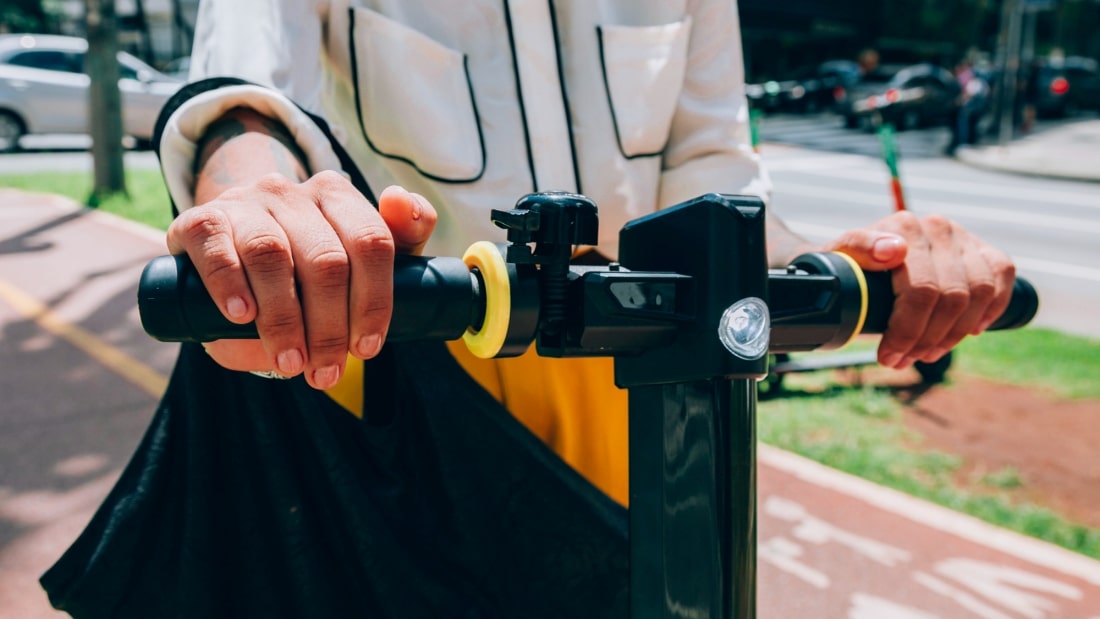
Why private e-scooters may pose a greater risk than rental models
77 days ago
4 minutes
Source: Chalmers
A recent study published in the Journal of Safety Research reveals that privately owned, lighter e-scooters compare poorly to the larger versions designed for rental schemes.
E-scooters can vary significantly in key aspects such as steering and braking capabilities, wheel size, engine, and suspension systems, all of which can have harmful implications in the event of a crash.
One of the authors of the study is Marco Dozza, Professor in Active Safety and Road-user Behaviour at Chalmers University of Technology, Gothenburg. “Individuals look for economical and transportable products, favouring light and foldable e-scooters that unfortunately also have the issues mentioned above.”
E-scooters available in city rental schemes often feature larger wheels, superior steering and braking capabilities, and better suspension systems, than e-scooters available for private purchase, which tend to be smaller and less reliable in crash avoidance.
In the study, Marco Dozza and his colleagues at Chalmers compared a large e-scooter, a light e-scooter, and a bicycle (both in power-assisted and non-power-assisted modes) in field trials to determine any variations in manoevrability constraints when avoiding a rear-end collision by braking and/or steering.
The results showed that braking performance does vary between the different vehicles. Specifically, e-scooters are not as effective at braking as bicycles, but the large, rental-type e-scooter demonstrated better braking performance than the light e-scooter. Regarding steering performance, no statistically significant difference was observed. The bicycles were perceived as more stable, manoeuvrable, and safe than the e-scooters.
Influence of previous experience
An individual’s previous experience in riding a bicycle can be assumed to have some influence on a rider’s ability to handle a critical situation when riding an e-scooter. There is the potential for a false sense of ability and confidence driving a seemingly similar vehicle.
“The results from the study suggest that new micromobility vehicles necessitate ad-hoc training to be safe. The fact they resemble a familiar and possibly overtrained vehicle – the bike – may trick us to believe that we know how to master them but that is not necessarily the case,” says Marco Dozza.
Because we can transfer our balance skills directly from a bicycle to an e-scooter, there can be an initial sense that it is easy to ride an e-scooter. However, when faced with an emergency and need to brake, the expectations we have from our previous experiences of cycling do not match – we may overestimate the braking ability of the e-scooter, with clear hazardous implications.
“One third of all e-scooters crashes happen on the first ride. Our results suggest that an expectation mismatch on manoeuvring performance would explain this puzzling finding that has been confirmed in multiple studies.”
Vehicle weight and steering
The study authors note that the heavier rental e-scooters could, in the event of a collision, pose more of a hazard. Furthermore, they advised that riders should familiarise themselves with alternative collision-avoidance strategies to braking.
Marco Dozza states: “In general, when vehicles are heavier, collisions are more severe. While larger e-scooters proved to brake better, any time they collide they may cause more damage than lighter vehicles. Further, harsh braking on low-friction surfaces, like ice or wet leaves, may also destabilise a vehicle. In our trials, the tarmac was dry and smooth so we do not know if larger e-scooters would perform well in wet or icy conditions as well.”
“If there is space for moving aside, and braking is not enough to stop in time, steering is a better alternative. Because small e-scooters suffer from longer braking distances than bikes and larger e-scooters, the situations in which steering is a better alternative than braking are more common. Unfortunately, our study shows that participants are less comfortable steering away to avoid a collision when riding an e-scooter than when riding a bicycle.”
Marco Dozza shared crucial advice for riders new to e-scooters: “Practice braking and steering avoidance maneuvers in an empty space. Do not wait for a critical situation to happen before testing how the vehicle can brake or steer. The simplest exercise is to imagine a line on the road and try to brake as late and as close as possible to the line. Most people will overshoot, and many may be surprised by how much. Repeating this exercise a few times may already be enough to make a difference.”

LEVA EU
Campaign success
Lorem ipsum dolor sit amet, consectetur adipisicing elit, sed do eiusmod tempor incididunt ut labore et dolore magna aliqua.
Member profile
Lorem ipsum dolor sit amet, consectetur adipisicing elit, sed do eiusmod tempor incididunt ut labore et dolore magna aliqua.